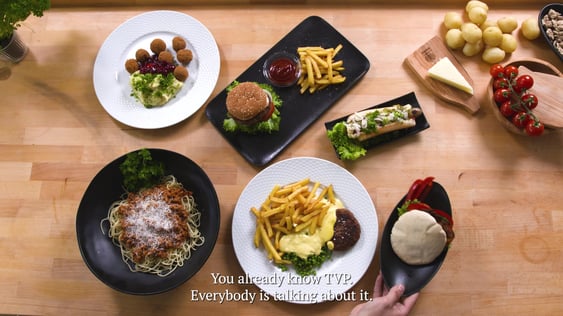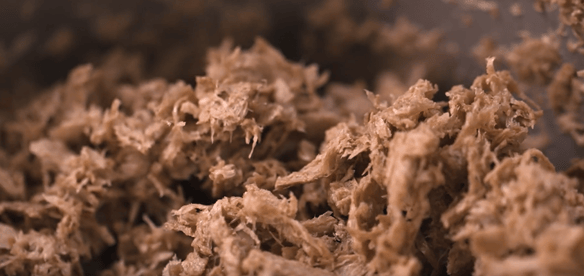You might think potato is primarily based on starch. And you are right. However, potatoes also contain around 2% protein, out of which 1% can be isolated and utilized to the benefit of protein-rich products. For example, plant-based meat.
At KMC, we take pride in using the whole potato. Our textured potato protein is a good example of this. Every time we produce 400.000 tonnes of potato starch, we are left with 20.000 tonnes of potato protein. For a long time, the protein was seen as a waste product, but in recent years, we have been trying to figure out how to bring this side stream into play.

Our production of textured potato protein is based on a protein dough which is extruded under high pressure and temperature and expanded through a nozzle and thereby dried. The finished product is airated like breakfast cereals and can absorb 3-4 times water when hydrated.
What are the 3 main benefits of textured protein?
Textured vegetable protein is produced from both soy, wheat, peas, horse beans and other exotic raw materials like hemp and quinoa. At first sight, textured potato protein might look the same as all the others. However, it is indeed different in the following ways:
- Nutrition
Potato protein contains essential amino acids that you would otherwise only obtain by combining different protein sources. Potato protein holds a high Protein Digestibility Corrected Amino Acid Score (PDCAAS), which is higher than both pea protein and beef.
- Taste and smell
Textured protein provides the fibrous structure known from meat and a nice frying crust which can be ideal for plant-based meat alternatives. In addition, textured potato protein has a mild taste and a subtle smell similar to pork rid which can be masked. All in all, the taste and smell of textured potato protein makes the product ideal for the production of plant-based burger patties, sausages, schnitzels or meat balls.

- Climate footprint
The potato has one of the lowest climate footprints in the vegetable world. This is of course due to the nature of the potato, but also decades of potato growing which has resulted in an extremely effective harvest. Sourcing potatoes from local fields, like we do at KMC, further lowers carbon emissions from transportation and secures a high quality, low emission product made in Denmark.
